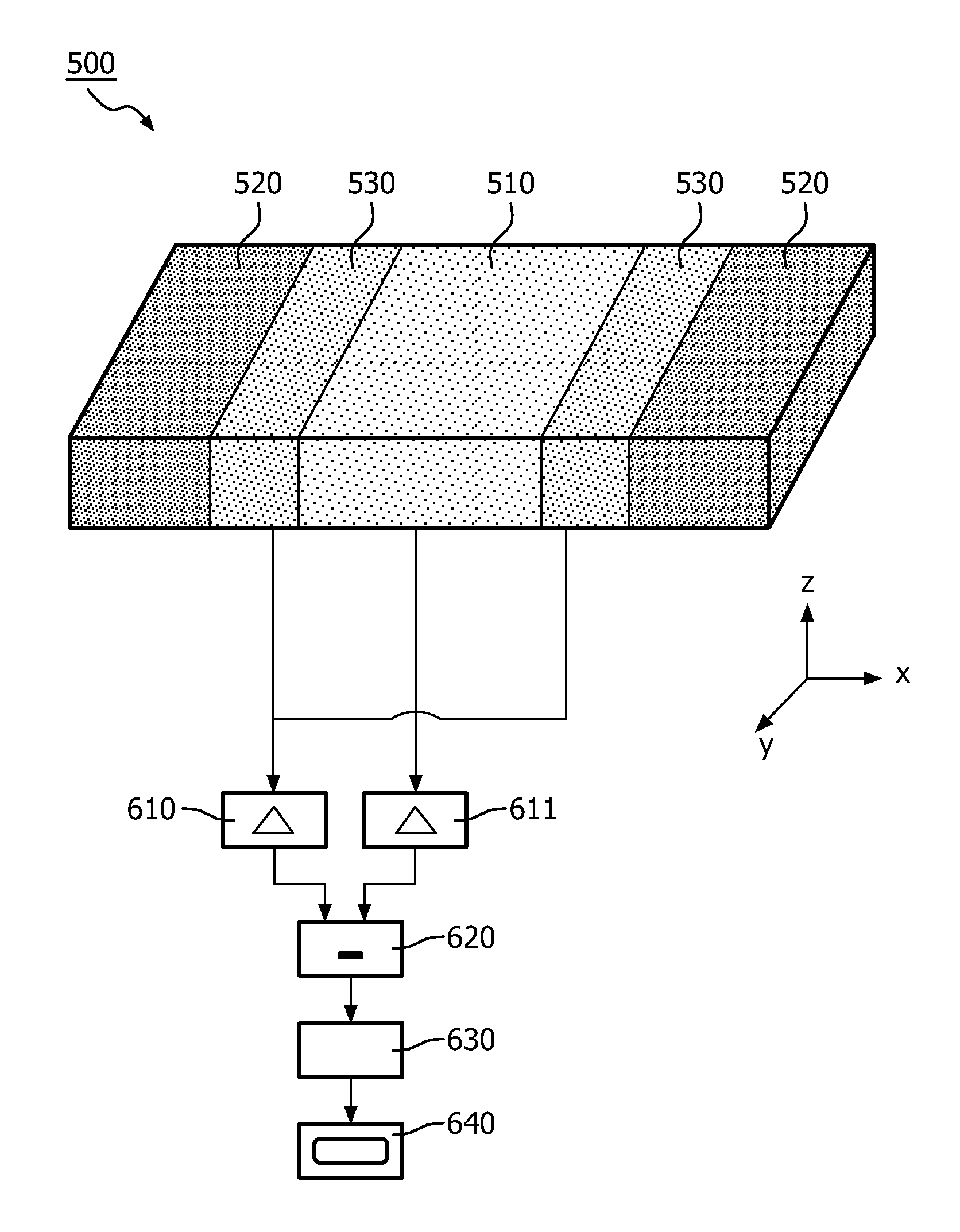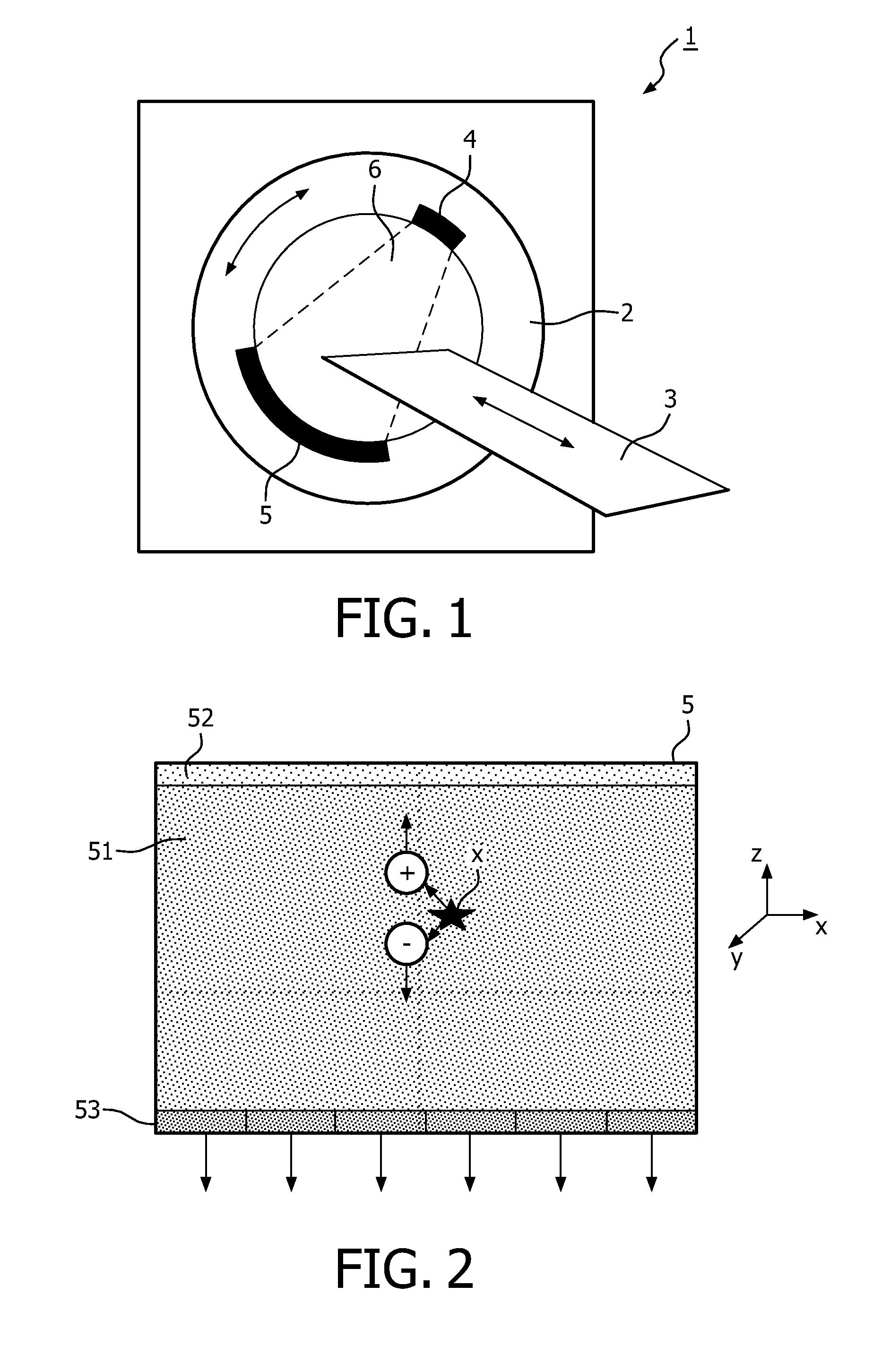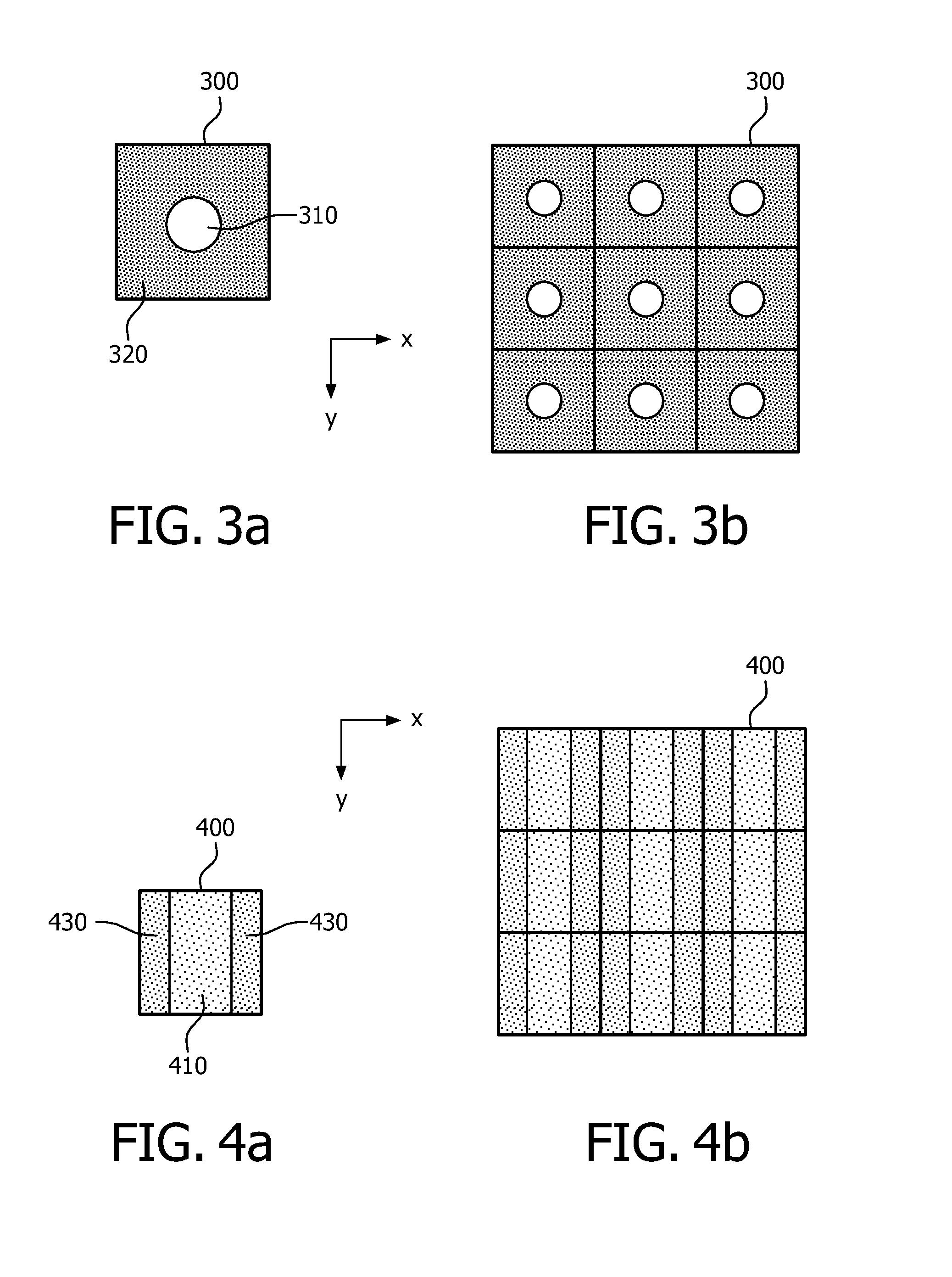Direct conversion photon counting detector
a detector and photon technology, applied in the direction of instruments, x/gamma/cosmic radiation measurement, radiation control devices, etc., can solve the problems of limiting the performance of steering electrode configuration, electrical field distortion, and limit the pixel area of electrodes,
- Summary
- Abstract
- Description
- Claims
- Application Information
AI Technical Summary
Benefits of technology
Problems solved by technology
Method used
Image
Examples
Embodiment Construction
[0022]A direct conversion photon counting detector, an imaging system and a method to detect photons with a direct conversion photon counting detector are disclosed.
[0023]Direct conversion photon counting detection is a technique that is predominantly used in astrophysics, medical imaging and non-medical imaging such as luggage scanning. Embodiments of the present invention are described and illustrated relating to medical imaging, in particular to x-ray radiation detection in computed tomography, but a skilled person would understand how to adapt the described embodiments for other types of imaging, including how to adapt the direct conversion photon counting detector for detecting photons with other energy levels (such as gamma-ray radiation).
[0024]The embodiments and examples described below are described for the case that electron collection is used. The present invention also covers the case of hole collection. To achieve this, a skilled person would understand that the same em...
PUM
 Login to View More
Login to View More Abstract
Description
Claims
Application Information
 Login to View More
Login to View More - R&D
- Intellectual Property
- Life Sciences
- Materials
- Tech Scout
- Unparalleled Data Quality
- Higher Quality Content
- 60% Fewer Hallucinations
Browse by: Latest US Patents, China's latest patents, Technical Efficacy Thesaurus, Application Domain, Technology Topic, Popular Technical Reports.
© 2025 PatSnap. All rights reserved.Legal|Privacy policy|Modern Slavery Act Transparency Statement|Sitemap|About US| Contact US: help@patsnap.com



